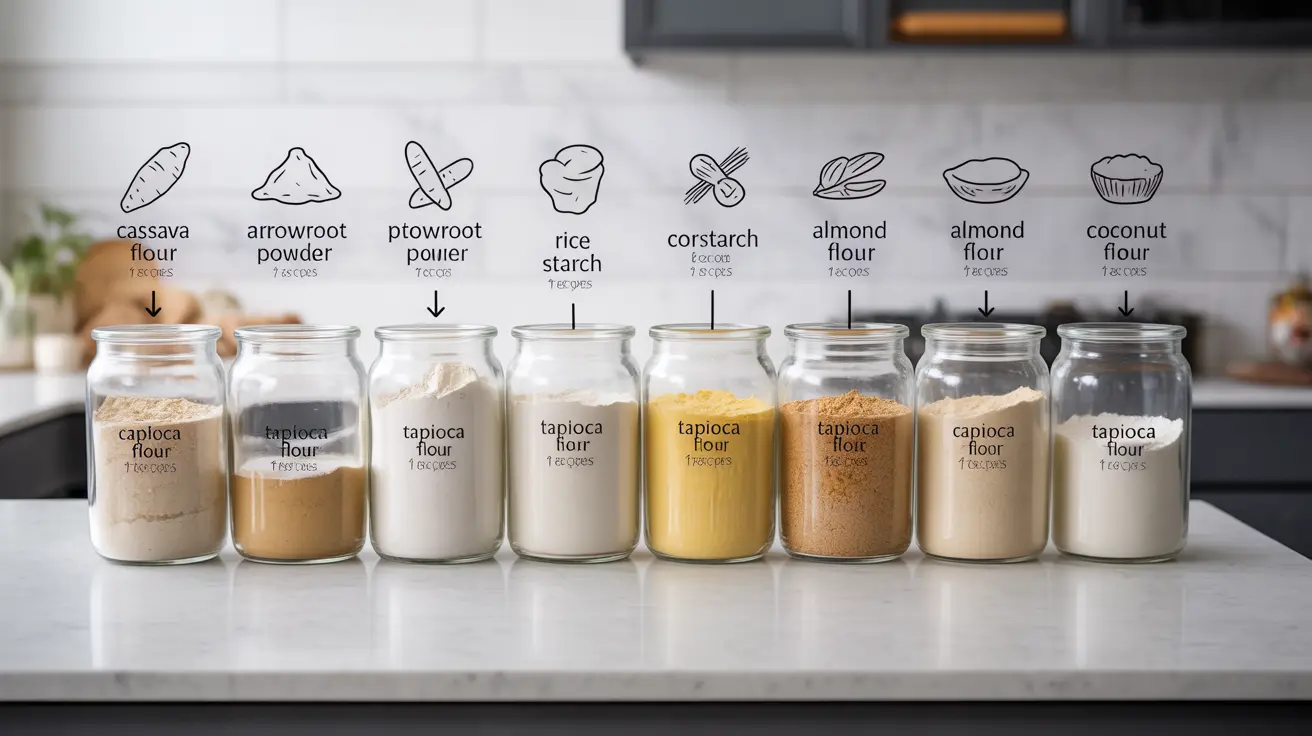When you need to replace tapioca flour in your recipes, whether for dietary restrictions, availability issues, or personal preference, several excellent alternatives can help you achieve similar results. Understanding these substitutes and how to use them effectively can make the difference between a recipe's success or failure.
In this comprehensive guide, we'll explore the most reliable substitutes for tapioca flour, including both gluten-free and conventional options, and provide specific guidance on how to use each alternative effectively.
Popular Gluten-Free Alternatives
Cassava Flour
Cassava flour stands as one of the closest substitutes for tapioca flour, as both come from the cassava root. However, cassava flour uses the whole root, resulting in more fiber and a slightly different texture. Use it in a 1:1 ratio when substituting for tapioca flour in most recipes.
Arrowroot Powder
Arrowroot powder provides excellent thickening properties and works particularly well in sauces and pie fillings. Use it as a 1:1 replacement for tapioca flour, but be aware that it may create a slightly more transparent final product.
Rice Flour
Both white and brown rice flour can substitute for tapioca flour, especially in baking recipes. Use about 2 tablespoons of rice flour for every 1 tablespoon of tapioca flour called for in the recipe.
Starch-Based Substitutes
Potato Starch
Potato starch works exceptionally well as a thickening agent and can replace tapioca flour in most recipes. Use it in a 1:1 ratio, but avoid boiling it for too long as it can break down and lose its thickening power.
Cornstarch
Cornstarch serves as a readily available substitute that works particularly well in sauces and gravies. Use 1 tablespoon of cornstarch for every 1½ tablespoons of tapioca flour required.
Keto-Friendly Alternatives
Almond Flour
For those following a keto diet, almond flour can replace tapioca flour in many recipes. While the texture will be different, it provides a low-carb alternative that works well in baked goods. Use 1½ cups of almond flour for every 1 cup of tapioca flour.
Coconut Flour
Another keto-friendly option, coconut flour is highly absorbent and requires recipe adjustments. Start with ¼ cup of coconut flour for every 1 cup of tapioca flour, and increase liquid ingredients accordingly.
Tips for Successful Substitution
When replacing tapioca flour, consider these important factors:
- Test small batches first to ensure desired results
- Adjust liquid ratios as needed, especially with highly absorbent substitutes
- Consider combining different alternatives for optimal results
- Monitor cooking time and temperature, as some substitutes may require adjustments
Frequently Asked Questions
What are the best gluten-free substitutes for tapioca flour in baking?
The best gluten-free substitutes for tapioca flour in baking include arrowroot powder, cassava flour, and rice flour. These alternatives maintain similar textures and properties while keeping recipes gluten-free.
How do I use cassava flour as a substitute for tapioca flour in recipes?
Use cassava flour as a 1:1 replacement for tapioca flour in most recipes. However, because cassava flour contains more fiber, you may need to adjust liquid ingredients slightly to achieve the desired consistency.
Can potato starch or cornstarch replace tapioca flour for thickening sauces?
Yes, both potato starch and cornstarch work well as thickening agents. Use potato starch in a 1:1 ratio, and cornstarch at a ratio of 1 tablespoon for every 1½ tablespoons of tapioca flour.
What differences in texture or flavor should I expect when substituting arrowroot or rice flour for tapioca flour?
Arrowroot creates a more transparent, glossy finish and a slightly more tender texture. Rice flour produces a somewhat grainier texture and may require additional liquid to achieve the desired consistency.
Are there any substitutions for tapioca flour suitable for people with allergies or on a keto diet?
Yes, almond flour and coconut flour are excellent alternatives for those on a keto diet or with certain allergies. These options are low-carb but require recipe adjustments due to their different absorption properties and textures.




